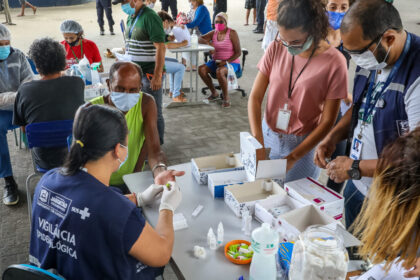Vaccination and natural immunity are two ways the body builds defenses against the flu virus. Both have their unique mechanisms, benefits, and limitations, which are helpful to understand. Here is more information on these two approaches, breaking down their effectiveness, how they function, and their impacts on public health:
Exploring Vaccination
The flu shot introduces inactivated virus particles or specific proteins from the flu virus into the body. These particles trigger the immune system to produce antibodies without causing illness. The antibodies generated through vaccination prepare the immune system to recognize and fight the actual virus if exposed later.
One of the key strengths of this vaccination lies in its ability to target specific flu strains predicted for the flu season. Medical experts conduct extensive research to identify the most likely strains for each year. This targeted approach enables vaccinated individuals to have a better chance of avoiding infection from these strains. While the flu shot focuses on specific protection, it also reduces the severity of the illness in individuals who contract the virus. For many at-risk groups, such as older adults and young children, vaccination offers a reliable safeguard against severe complications.
Identifying Natural Immunity
Natural immunity occurs when the immune system encounters the virus directly and responds by producing antibodies. This process often leaves the immune system better equipped to fight the same strain of the virus in the future. Natural immunity delivers benefits that are strain-specific. However, relying on this method comes with risks. Contracting the flu can lead to severe symptoms, hospitalization, or complications like pneumonia.
For some groups, these risks are life-threatening, making natural immunity less feasible as a standalone defense. Natural immunity may also leave gaps against new or mutated strains of the virus. Flu viruses evolve frequently, which means immunity built during one season may not fully protect against strains circulating the next year.
Understanding Public Health Impact
When individuals get vaccinated, their immunity not only helps them avoid contracting the virus but also reduces community transmission. This concept, often referred to as herd immunity, protects those who may not build strong defenses even with a vaccine, like people who are immunocompromised. Natural immunity has a limited impact on reducing transmission at a population level.
Individuals must first contract and recover from the illness to build immunity, maintaining a cycle of sickness that spreads the virus within communities. Vaccination campaigns impact public health by preparing the population for flu season in advance. This decreases absenteeism in workplaces and schools and lowers the burden on healthcare systems overwhelmed during peak periods.
Learn More About the Flu
Vaccination and natural immunity offer different pathways to defense, but their applications vary depending on health status and risk exposure. Getting a shot provides a proactive and specific approach to staying flu-free, while natural immunity builds defenses after infection. Both methods play roles in understanding and managing the virus, but the lower risks associated with vaccination make it a viable option. Contact a medical professional for more information on whether this vaccine is right for you.









